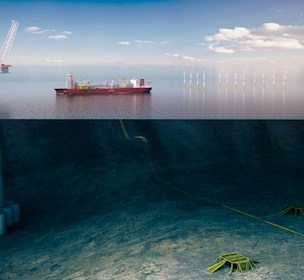How FiGS® and AUVs are shaping the future of subsea integrity
Explore how combining FiGS® with AUVs boosts subsea inspection efficiency, cuts costs, and supports predictive maintenance.
Cathodic Protection (CP) systems, using sacrificial anodes, remain a cornerstone of corrosion control for subsea pipelines and structures. However, as these assets age and environments become more complex, traditional inspection methods fall short in delivering the data necessary for proactive integrity management. Which is why the use of autonomous underwater vehicles (AUVs) equipped with the FiGS® CP Inspection system is growing fast.
The rise of AUVs in underwater inspection
AUVs are gaining traction for subsea inspections due to their efficiency, and autonomy, which allows use of smaller, more cost-efficient vessels with less personnel mobilised offshore. Unlike traditional ROVs or diver-based methods, AUVs can execute wide-area surveys without the need for large support vessels or real-time pilot control. This capability makes them ideal for repetitive inspection tasks, particularly when getting close to a pipeline or structure, which is challenging with standard vessels.
Performing CP surveys using AUVs and FiGS® overcomes many of the challenges of conventional CP monitoring tools, which require contact measurements and/or proximity technology as well as limitations such as signal interference, calibration requirements, and poor visibility conditions.
Leveraging the flexibility of AUVs
FiGS®, developed by FORCE Technology, is engineered specifically to overcome these hurdles. It is a highly sensitive, non-contact field gradient sensor that maps both the strength and direction of electric fields established by cathodic protection systems. This unique capability allows FiGS® to deliver precise, high-resolution data on the condition of CP systems with only minimal contact readings for model calibration, eliminating the need to calibrate reference cells prior to, and during the survey. Crucially for AUV integration, FiGS® operates effectively at higher altitudes and speeds than traditional sensors, which aligns with the fast and efficient movement profiles of modern AUVs.
For pipeline inspections, two FiGS® sensors in parallel with the pipeline allow triangulation of data which ensures correct measurements of the field gradient strength and direction, if the AUV (or ROV) slightly drifts from the top of the pipe. This not only enhances data accuracy but also ensures that areas of interest such as those with coating damage or anode depletion as well as drain zones, are closely inspected.
From inspection to prediction
The operational advantages of pairing FiGS® with AUVs are significant. By removing the need for vessel-based ROVs for CP monitoring, operators reduce exposure to hazardous environments, decrease carbon footprints, and cut costs associated with vessel time and crew logistics.
Moreover, FiGS® supports a shift from reactive to predictive maintenance strategies. Its ability to assess anode current output, steel current density, and coating condition by advanced computer analysis of the raw data means it can be used to build accurate digital twins of subsea assets. When paired with FORCE Technology’s cutting-edge CP modeling tools, operators can forecast CP system performance and remaining life.
This holistic insight enables more informed decisions about whether retrofit is necessary and, if so, how to optimise the CP retrofit system and determine the critical timeline for installation. In one example, a buried pipeline initially assessed using conservative design assumptions was found after a FiGS® survey to require only half of the originally planned retrofit anodes, cutting the retrofit cost by 50 percent.
Reducing the operational burden
As the offshore industry evolves, autonomy is becoming central to subsea integrity management. The combination of AUVs and FiGS® represents a powerful step forward in this transformation. It enables longer, more frequent, and more reliable CP surveys without the operational burden of conventional methods.
As asset owners look to extend the life of their infrastructure while managing costs and environmental impact, adopting innovative technologies like FiGS® for AUV deployment gives offshore contractors a powerful advantage. The future of subsea inspection lies in smart, autonomous systems. With FiGS® and AUVs leading the way, that future is happening now.
Get in touch to learn more about unlocking the benefits of FiGS® when used with autonomous underwater vehicles.


